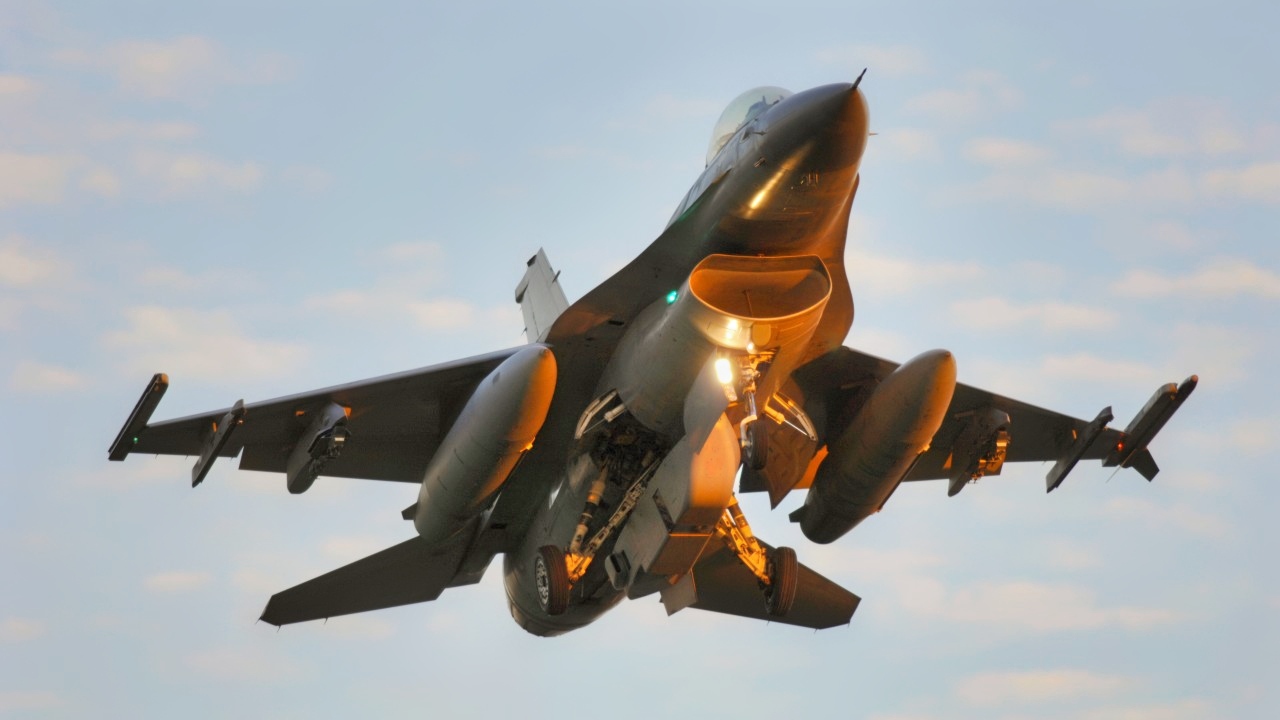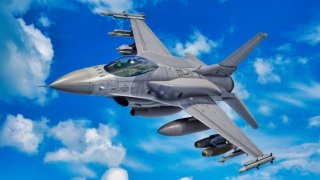The F-16 Fighter Can't Win the War Against Russia
NATO Secretary General Jens Stoltenberg has said that the F-16s could expand the capability of the Ukrainian military, but likely won't be enough to radically affect the situation in the combat zone.
Summary: The Netherlands has committed to providing Ukraine with two dozen F-16 Fighting Falcons, joining Denmark and Norway in supporting Kyiv with these advanced aircraft as they transition their fleets to the F-35 Lightning II. This pledge, part of a broader NATO effort involving a total of 65 F-16A/B models, aims to bolster Ukraine's military capabilities amidst its ongoing conflict with Russia. The delivery timeline hinges on the readiness of Ukrainian pilots and infrastructure, with hopes to commence transfers by summer. While the F-16's introduction represents a significant enhancement of Ukraine's aerial prowess, NATO Secretary General Jens Stoltenberg cautions against viewing them as a panacea for the conflict.
The F-16 Question for Ukraine: How Much Impact Against Russia?
The Netherlands defense minister has pledged to send Ukraine two dozen F-16 Fighting Falcons, with the first aircraft set to arrive by this summer. The question being asked in aviation circles is whether the aircraft will be too little to impact the course of the war.
"In total, we are going to hand over 24 F-16 fighters. They will be handed over to Ukraine as soon as everything is ready. This moment depends on the training of Ukrainian pilots and technicians, as well as, of course, on the infrastructure," Defense Minister Kajsa Ollongren said in an interview with Ukrinform conducted in The Hague over the weekend.
Denmark and Norway have also pledged to provide F-16s from their respective fleets. The NATO allies are replacing their Fighting Falcons with the fifth-generation F-35 Lightning II. Washington has supported the transfer of the aircraft and has aided in preparing Kyiv's pilots to operate the multirole fighter.
A total of 65 F-16A/B models will be sent to aid Ukraine.
"It is difficult, it is complicated, but it will happen. Our coalition hopes that this summer we will be able to start delivering F-16 fighters, first Danish and then the Netherlands," the Dutch defense minister added.
The F-16 made its first flight 50 years ago this past January, and while it is no longer being acquired by the United States Air Force, aerospace and defense giant Lockheed Martin continues to produce the aircraft for foreign sales.
The F-16s Won't Turn the Tide
NATO Secretary General Jens Stoltenberg has said that the F-16s could expand the capability of the Ukrainian military, but likely won't be enough to radically affect the situation in the combat zone.
"A single system can't change the situation on the battlefield," said Stoltenberg, according to a report from Ukrainska Pravda. "This isn't a silver bullet that could change the course of the war. Yet the F-16s are important. They will strengthen Ukraine's ability to repel Russian aggression even more."
Expectations of what the Fighting Falcon can do should be tempered, of course, as there was too much emphasis placed on other Western-made military hardware.
Though some platforms – notably the MIM-104 Patriot surface-to-air missile system and M142 HIMARS – have been seen as potential game changers for Kyiv, even those weapons have been provided in great enough numbers to drive Russia's forces out of Ukraine. The Patriot has helped counter Russia's missile and drone strikes, and the HIMARS has been employed to successfully strike key Russian positions on numerous occasions.

Yet, the recent loss of a Patriot and HIMARS served to underscore how a handful of systems simply aren't enough.
Likewise, the German-made Leopard 2, British-supplied Challenger 2, and U.S.-made M1 Abrams main battle tanks (MBTs) were practically touted as unstoppable miracle weapons. In wartime, miracles may seem to happen, but no tank or plane should be seen as invincible or unstoppable.
Thus, the arrival of the F-16 Fighting Falcon could help Kyiv hold its ground and perhaps make the air war over Ukraine even more costly for the Kremlin – which has seen the loss of several Su-34 and Su-35 aircraft. The Fighting Falcon might not clear the skies, but it will ensure that Russia can never feel it has anything resembling air supremacy.
Author Experience and Expertise: Peter Suciu
Peter Suciu is a Michigan-based writer. He has contributed to more than four dozen magazines, newspapers, and websites with over 3,200 published pieces over a twenty-year career in journalism. He regularly writes about military hardware, firearms history, cybersecurity, politics, and international affairs. Peter is also a Contributing Writer for Forbes and Clearance Jobs. You can follow him on Twitter: @PeterSuciu.
You can email the author: [email protected].


